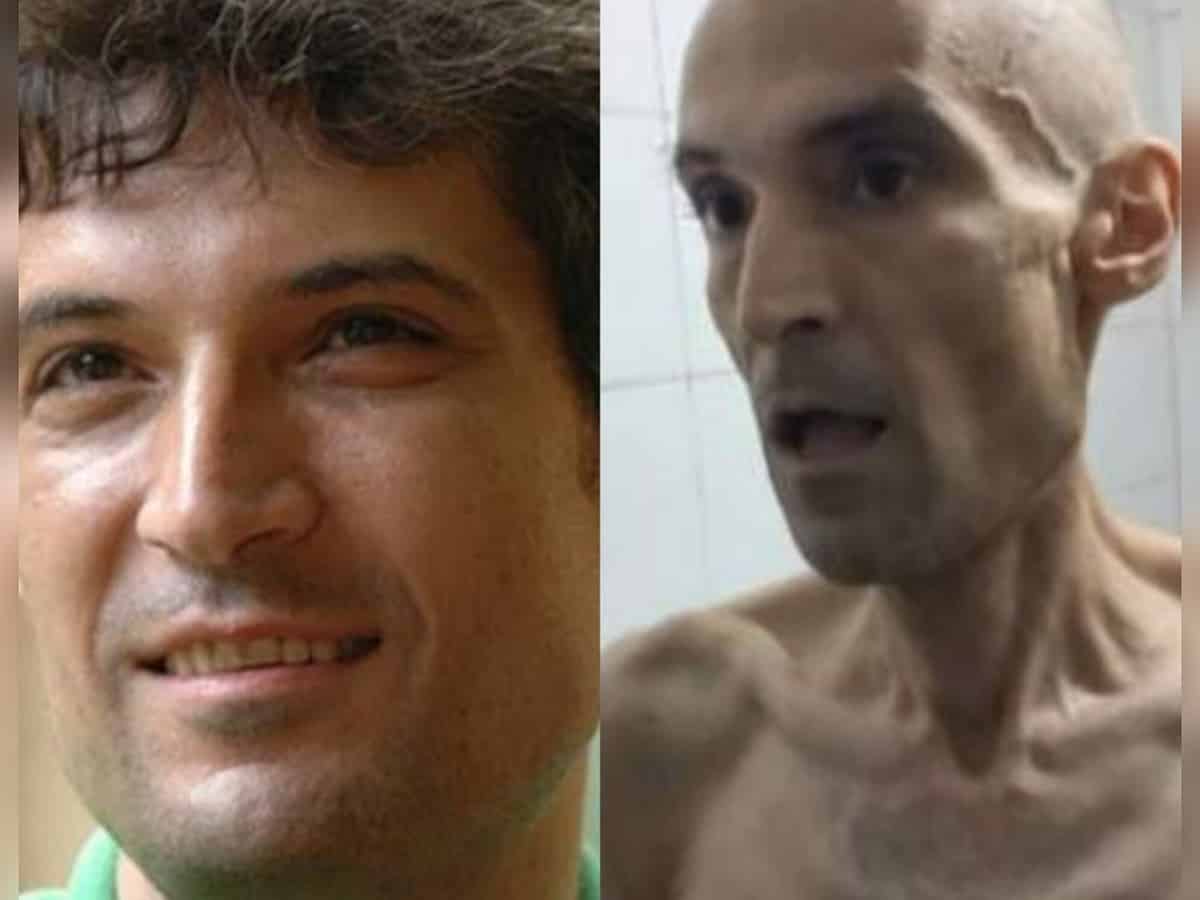
Images of a jailed Iranian doctor and human rights activist have circulated on social media platforms after he declared a hunger strike in support of the ongoing anti-hijab protests since the death of Mahsa Amini in police custody.
53-year-old Farhad Meysami, who has been imprisoned since 2018 for supporting activists who rejected the policy of imposing the headscarf.
The activist was charged with spreading propaganda against the Islamic Republic, gathering and colluding to commit crimes against national security, and insulting sanctities.
Farhad began his hunger strike on October 7, 2022, in protest of the government’s crackdown on protesters.
In images, which spread on social media, sparked outrage and warnings that he was in danger of death.
His lawyer wrote on Twitter that he had lost 52 kilograms of weight as a result of the hunger strike.
“My client Farhad Meysami’s life is in danger He has started a hunger strike to protest the recent killings in the streets and government killings. According to the announcement of the prison health department, his weight has decreased to 52 kilos and he has been beaten due to his resistance to being transferred to the prison for dangerous prisoners,” tweeted lawyer Mohammad Moghimi. “
In a letter published by the BBC Persian service, Meysami announced three demands— an end to executions, the release of political and civilian prisoners, and an end to forced headscarf harassment.
Amnesty International called on the Iranian authorities to release Meysami without conditions.
“Harrowing photos of Dr Farhad Meysami, a brave hunger-striking advocate for women’s rights, in prison,” Robert Malley, the US special envoy for Iran, wrote on Twitter.
Tweeters posted a video showing the doctor before his arrest, and he appeared to be in good health.
Protests in Iran continues
Iran has been witnessing protests since the death of 22-year-old Mahsa Amini, on September 16, after she was arrested in Tehran by the morality police on suspicion of not respecting the country’s dress code.
The demonstrations involved people from all walks of life and different sects in Iran after Amini’s killing.
Iranian women are at the fore in the demonstrations, in which many young people participate, to chants of “Woman life freedom” and “Death to the dictator.”
The protests represent one of the country’s boldest challenges since the 1979 revolution.
Despite the widespread condemnation of the suppression of the popular protests in Iran, the torrent of arrests carried out by the Iranian regime, its issuance of harsh sentences against protestors, and reports of hunger strikes and torture of prisoners in separate parts of the country, continues.
The regime continued to pressure other demonstrators and activists of the popular uprising through arrests, harsh sentences, and bans.
The Human Rights Activists News Agency (Hrana) announced that 527 protesters had been killed in the unrest as of Saturday, February 4, including 71 children.
At least 19,623 people, including 718 students, were arrested in those protests that took place in 164 cities and towns and 144 universities.



